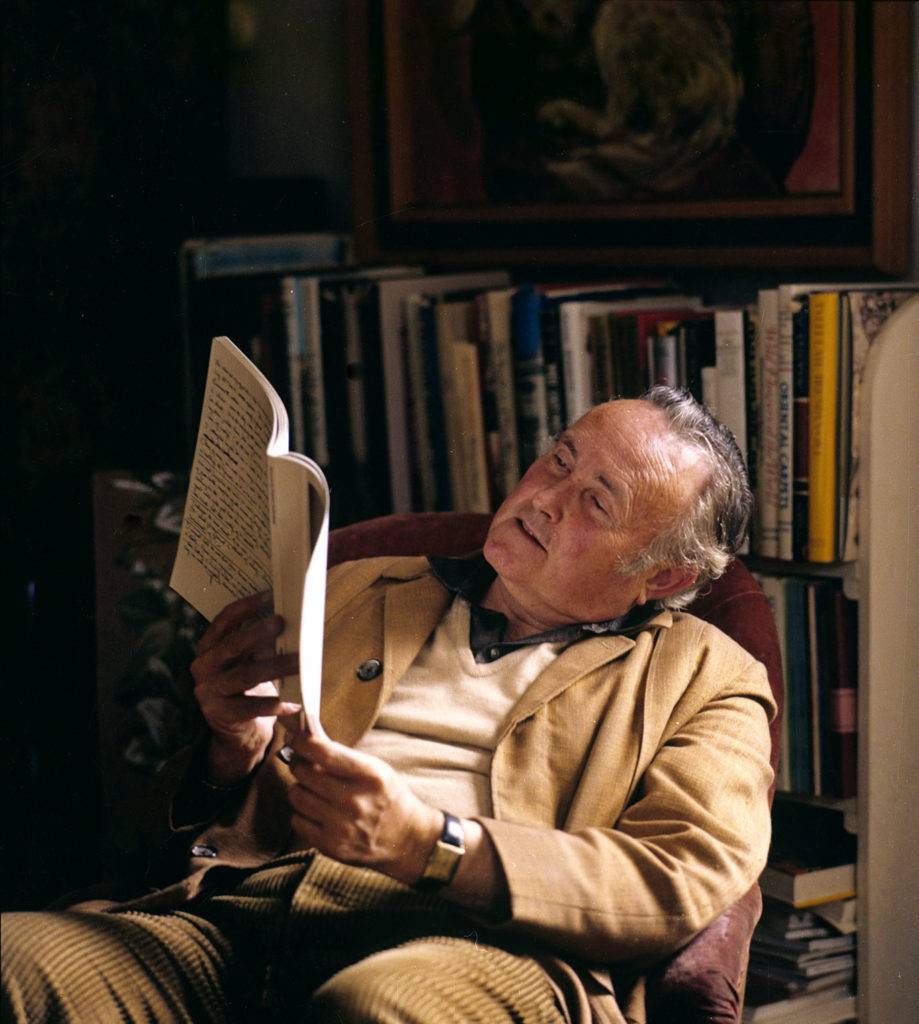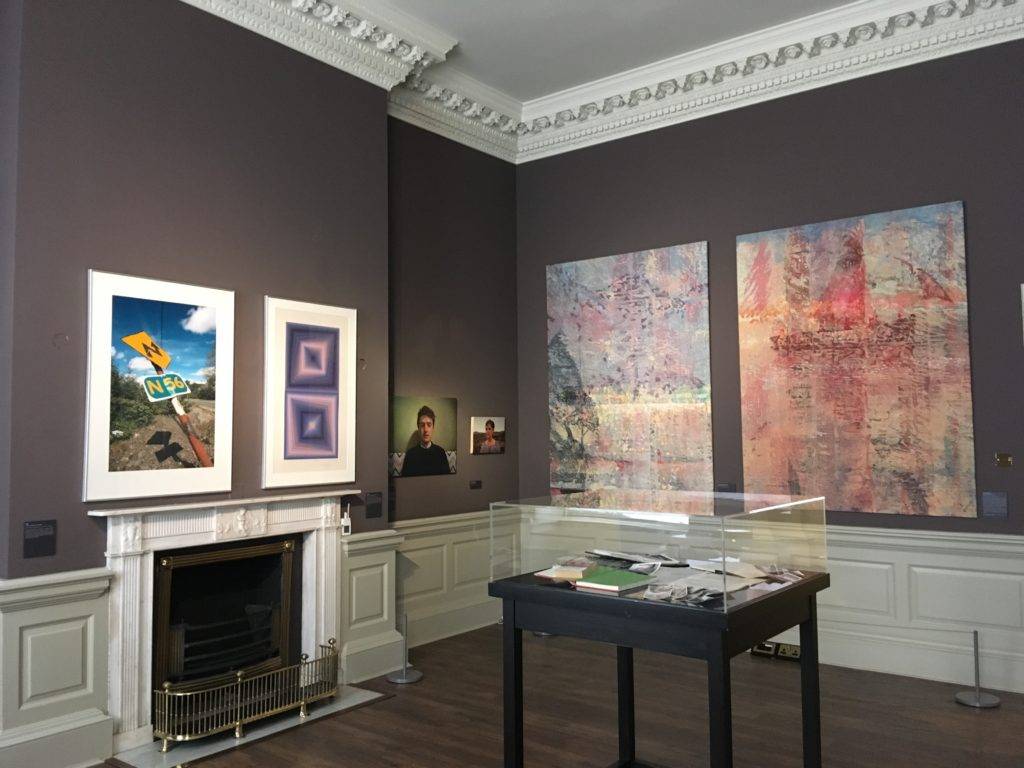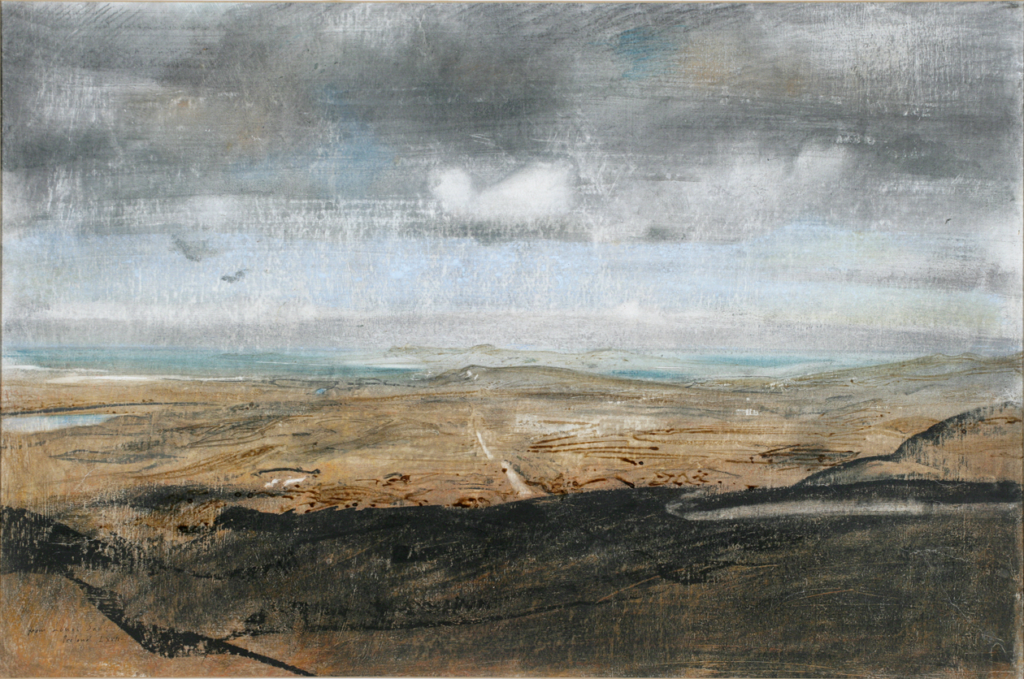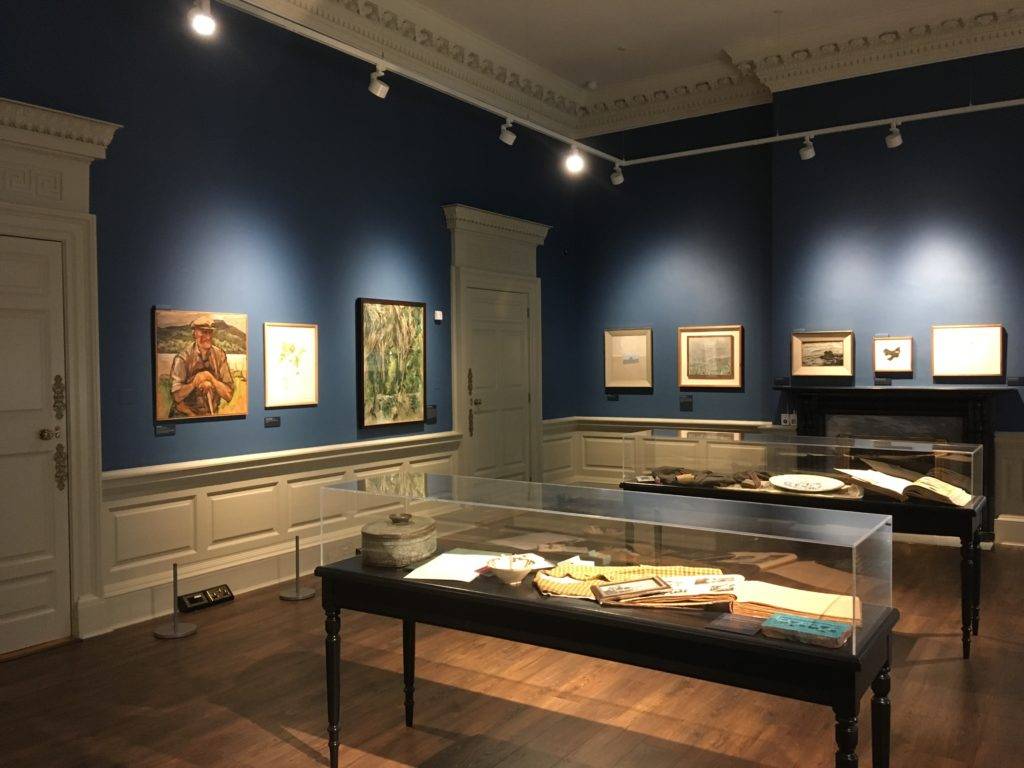By Adrian Kelly, Curator of ‘Derek Hill and the view from Donegal’
The Glebe Art Museum in Co. Donegal opened in 1984 and is a wonderful place to work. Curators have a strange old life, it’s quite vocational and we talk about ‘our’ collections as if we own them. As the curator of an artist’s collection, I feel this to be even truer.
In many ways, this exhibition started when Derek Hill moved to Donegal and began to assemble his collection in earnest. After a couple of decades, Derek realised that he had made a museum and so he began the process of giving it to the people of Ireland.
Derek bought Saint Columb’s Hotel, on the banks of Lough Gartan in Donegal, in the early 1950s. It had been a hunting and fishing hotel and before that a rectory. He had travelled constantly since his teens and after twenty years wanted somewhere to call home.

Derek Hill at home in the Glebe, Co. Donegal
Donegal can feel neglected to those of us who are from here; our friends talk about how far away it is and how long it takes to get here. To visitors, it’s quite exotic; breathtakingly beautiful with lots going on. I’m sure that the stunning landscape and the magnificent sea along with the mesmerizing quality of light were seductive to an artist like Derek Hill – but it was, nevertheless, extremely remote. It was certainly a great distance from Italy where he had been living and working on and off for several years. It is quite a leap of faith to move from cosmopolitan Rome to rural Donegal.
Academic collections have an authority and focus that artists’ collections tend not to. When it comes to Derek’s collection, I feel I have an advantage; I trained as a painter and not as an art historian or a contemporary curator. I suspect an academic would find it terribly frustrating because there are no clean threads to pick up and follow. It’s lovely for the painter in me because of exactly that; so many different threads, and only Derek really knew where they went. Some of them don’t go anywhere, they’re just things he picked up and liked, they informed him and his art in some way. It’s fascinating trying to figure it all out. It is also liberating – the connections Derek Hill made wouldn’t stand up to too much scrutiny but then again they didn’t have to.
Visitors to ‘proper’ collections know what to expect, they know they’re going to learn something, and have a fair idea what that something is. Visiting is an objective exercise but the visitor must be in the mood. Artists’ collections are best approached more openly. Being an artist is hard work but it’s never a good plan to have goals that are defined too clearly. Artists are constantly trying to stretch for things they can’t quite reach yet. Accident and surprise are good. Artists are certainly focussed but it’s a different kind of focus; an alertness. As a result, visitors don’t have to be in the mood – the mood will find them in spite of themselves.

Derek Hill’s legacy as an artist and collector is explored in the Minerva Room, State Apartments Galleries
Just before Christmas, the Glebe Art Museum was invited to present an exhibition in the State Apartments Galleries in Dublin Castle. It was an opportunity too good to miss, but there was not enough time to do it either. Decisions had to be taken quickly. The fact that there are four rooms made things a little simpler. The exhibition could be broken into four distinct but interrelated themes. But which four threads to pick up and follow?
That was the tricky part.
I have curated many exhibitions from the collection over the past twenty years and always looked for a different angle. For this exhibition, I enlisted the assistance of two of my longstanding colleagues, Jean Kearney and Noeleen Lowry – the two people who know most about the collection. Noeleen is the registrar so she has an exhaustive knowledge of the collection. Jean is our head guide and education officer so she knows the collection better, she interprets it, she knows how to use the collection and how to learn from it. Lots of themes were discussed and some of the best were left out because they didn’t flow well together.
In the end, we went for Derek Hill’s time in Italy, his annual painting expeditions to Tory Island, his collection, and his legacy.

View from Lough Salt, by Pietro Annigoni, 1967
In many ways, the task of understanding the Derek Hill collection will be never-ending and an exhibition like this is just another stop on the journey. It allows us to ask questions and make connections, to stand back and see how things look from a new perspective, to pick up threads and see where they lead.
I hope visitors to ‘Derek Hill and the view from Donegal’ will stand back and take a look at a unique collection, and fragments of the life of the man who made it. They may well find something that resonates with their own experience.

The works on display in the King’s Room, State Apartments Galleries, are drawn from Derek Hill’s diverse collection and include works by Pablo Picasso and Irish artist Jack B. Yeats.
‘Derek Hill and the view from Donegal’ runs until the 20th of August in the State Apartments Galleries and is open every day from 9.45 am to 5.45 pm (last admission 5.15 pm).
